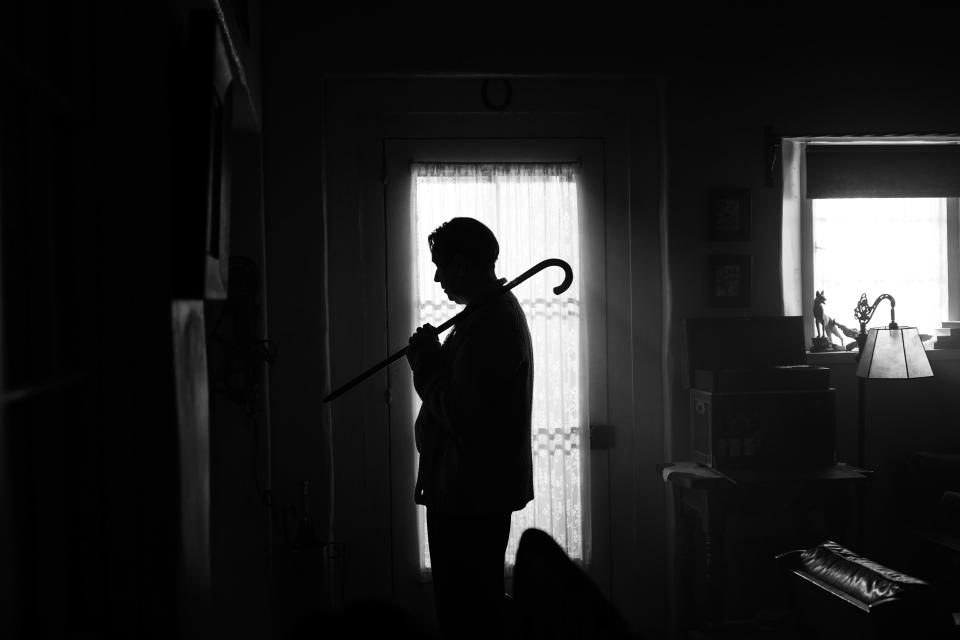Mank, Citizen Kane and a brief history of tumultuous filmmaking

Dark figure: Gary Oldman as Herman J. Mankiewicz
(Gisele Schmidt/NETFLIX)To butcher a quote from an old playwright, the course of filmmaking never did run smooth. Throughout cinema history, from the golden age of Hollywood back in the 1930s up until the present day, various on-set tumults have threatened to overshadow the on-screen drama.
Quite often, wranglings behind the scenes have been straightened out so that those watching the finished product might never have known what went on in the shadows. That much could be said about Citizen Kane, elevated by many as the greatest film ever, and whose writing in the late Thirties forms the spine of Mank, the new movie from David Fincher that lands on Netflix this Friday (November 4).
Who actually wrote the screenplay has been the subject of decades-long debate. Some claimed it was the work of its director, producer and star, Orson Welles, while others made the case that it came solely from the brain of screenwriter Herman J. Mankiewicz. These days, the accepted wisdom is that it’s a mashed-together version of both — after all, both Welles and Mankiewicz took home the Oscar for Best Original Screenplay.
That this particular dispute existed hints at the strained relationship between the two. It’s something that’s explored in the film — even if it does grasp onto its poetic license rather tightly — but for the real-life Mankiewicz, a hardened drinker and gambler, production pandemonium was nothing new. Around the same time, he wrote for The Wizard of Oz, a glistening icon of American pop culture whose making was anything but smooth. The 1939 film enlisted an ever-rotating crew, with five directors and more than 20 writers, 17 of whom were uncredited, including Mankiewicz. Naturally, with no constant director at the helm, the resulting shoot was a mess. Multiple scenes had to be re-shot due to troubles with the original takes, and a handful of the actors became ill: Buddy Ebsen had an allergic reaction to his Tin Man costume, and Margaret Hamilton, who played the Wicked Witch, fell victim to her poisonous copper-based make-up.
Mank’s director, Fincher, also has history when it comes to chaotic shoots. He was an emergency draft onto the set of the 1992 film Alien 3. By the time he arrived, the film was a sinking ship. The script had already been rehashed various times, and when Fincher tried to whip everything into shape, he was undermined by objections from pretty much everyone — cast, crew, studio, the lot. Fincher has since disowned the whole thing. “A lot of people hated Alien 3,” he told the Guardian in 2009, “but no-one hated it more than I did.”
And while this kind of controversy is just about the only thing that Citizen Kane and Alien 3 have in common, it places both of them within a crowded class of fraught films. There have been those that ran perilously over budget, such as 1963’s Cleopatra, which, funnily enough, was directed by Herman’s brother, Joseph L. Mankiewicz. It had a proposed allowance of $2m, a hefty amount for the time, but eventually ballooned to $44m, something close to $375m in today’s money. To put that in context, Christopher Nolan’s recent brain-melter Tenet — you know, the one where they deconstruct the fabric of time and space on screen — worked with a budget of $205m.
And then there were those that were almost derailed by their director’s lofty ambitions. Werner Herzog’s 1982 film Fitzcarraldo was inspired by the story of Peruvian rubber magnate Carlos Fermín Fitzcarrald, who hauled a steamship over a hill to capture new territory. Entirely opposed to any special effects, Herzog forced his crew to repeat the feat with a 320-ton ship. Some were physically injured by the ordeal, with trauma an almost constant on-set presence — two plane crashes left five seriously injured and one paralysed, while in one particularly gruesome incident, a Peruvian logger was bitten by a deadly snake and cut off his foot with a chainsaw to stop the venom spreading.
It’s the kind of thing that’s become part of filmmaking folklore — much the same as 1979’s Apocalypse Now, the Vietnam masterpiece whose shooting was blighted by disastrous weather, the testy relationship between director Francis Ford Coppola and an overweight Marlon Brando, as well as leading man Martin Sheen suffering a heart attack. And then there was Titanic, led by an increasingly volatile James Cameron, agitated by confrontations with impatient studio bosses. His woes were compounded when someone spiked the communal chowder with the hallucinatory drug PCP. Around 80 crew members got sick, and many were hospitalised.
There is no shortage of other examples — dig into the background of The Shining for a taste of Kubrick-fuelled madness, or 1981’s Roar, which featured scores of wild animals with predictably bitey results. When you do watch Mank, maybe a thorny screenwriter won’t seem so bad.

